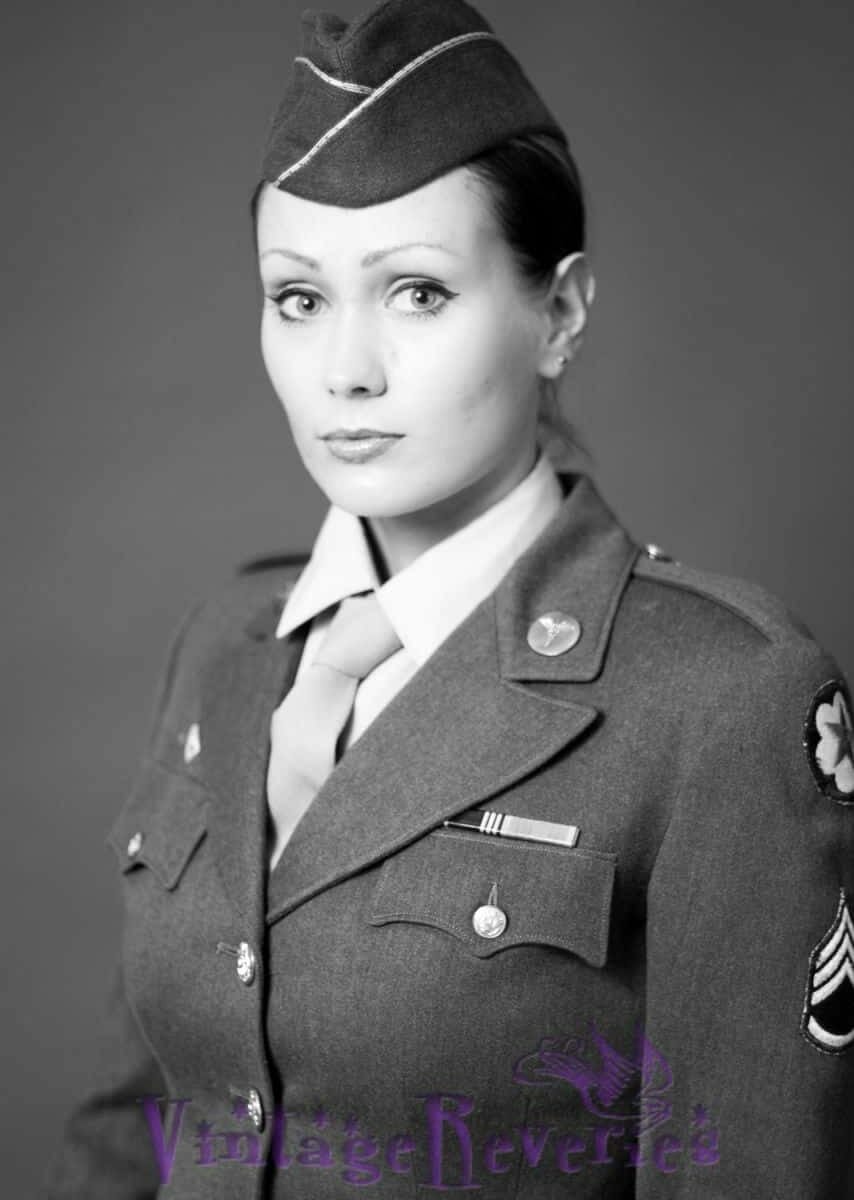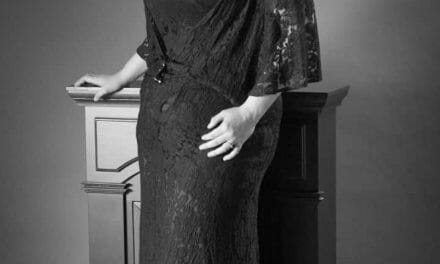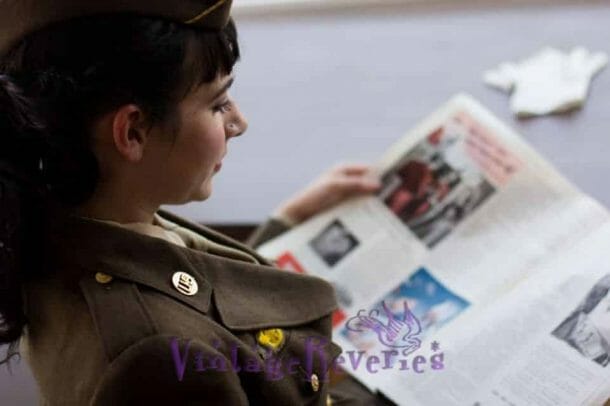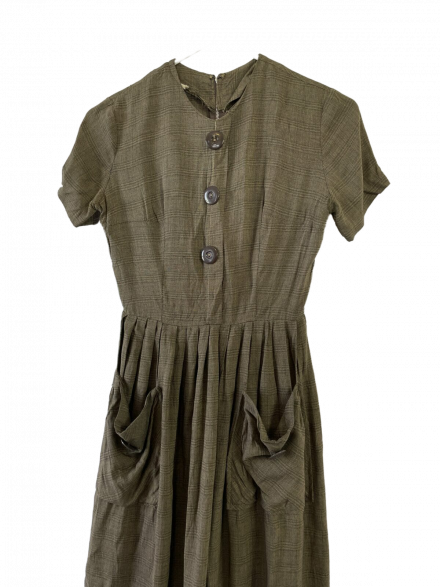
WWII WAC Uniform

Back in 2011, I had the amazing opportunity to borrow a World War II Women’s Army Auxiliary Corps (WAAC, later renamed WAC) uniform with a matching garrison cap from a local historical society. This was my very first shoot for the Carondelet Historical Society, and it holds a special place in my heart. The first picture from that shoot became my favorite, capturing not only the essence of the uniform but also the spirit of the era.
This particular WAC uniform was meticulously preserved in near-new condition, complete with visible ironing seams—a rarity for vintage military garments. The uniform notably included a tailored jacket and skirt that represented the finalized design improvements made to the WAC uniforms during the war. Interestingly, the accompanying army dress shirt may not have been part of the original uniform set, as it was disproportionately large, likely intended for a different purpose or person.
The Evolution of the WAC Uniform
Women’s military uniforms during WWII faced unique challenges. When the Women’s Army Auxiliary Corps was established in 1942, female recruits initially wore poorly fitting and impractical clothing that caused widespread dissatisfaction. Critiques poured in regarding the fit of the jackets, the poorly designed skirts, and the use of inferior materials. As a result, the War Department made significant revisions to enhance both the functionality and appearance of the uniforms.
The redesigned WAC jacket featured a longer, better-proportioned upper collar, and the bulky, unflattering breast pockets were replaced with simulated pockets that included buttoned flaps. Furthermore, a slightly longer cut was introduced, which lowered the positioning of the breast pockets and offered better coverage. However, practicality wasn’t entirely achieved—soldiers often had to unbutton the lowest button of their jacket for comfortable sitting as it was positioned too low.
Similarly, the skirt underwent substantial changes. The earlier straight-cut design quickly became a problem for active movement, as the fabric wrinkled and rolled awkwardly. To address this issue, a rounded cut was introduced, which allowed the skirt to better contour to the wearer’s figure, ensuring both comfort and a smart appearance. Despite these improvements, another issue arose: since men’s garment contractors were tasked with producing the uniforms, they often appeared stiff and overly structured.
Such improvements reflected a broader understanding during WWII of the unique needs of women serving in the armed forces. The changes sought to balance military efficiency with a sense of dignity and professionalism for female officers and recruits serving in non-combat roles, setting a precedent for better women’s military fashion in the years to come.
Bringing WWII History to Life
The model for this shoot, Anita, had never modeled before. She was introduced to me by a mutual friend from Arkansas, and despite her inexperience, she carried herself with a confidence and poise that perfectly complemented the historical significance of the uniform. Some of the pictures were edited with a Kodachrome-inspired effect to emulate the look of war-time photography, while others were left untouched, showcasing the raw simplicity of the moment. I still look back at those choices and marvel at how much my approach to editing has evolved over the years.
An especially fun detail from this uniform’s story comes from its historical context. As the WAC program was established, women primarily served as clerks, typists, and radio operators—roles that freed up men for active combat duty. The WAC was revolutionary at the time, representing the first major effort by the U.S. Army to enlist women directly into military service rather than as auxiliary support. In 1943, the WAAC officially became the Women’s Army Corps (WAC), marking a step toward greater recognition of women’s contributions to the war effort. By the end of the war, over 150,000 women had served in the WAC, performing vital duties across the world.
Preserving the Essence of Vintage Fashion
Looking back at these images, I’m inspired by the way they capture both the beauty and history of the WAC uniform. There’s something powerful about connecting with our past—finding human stories in clothing, seeing how form and function meet to tell us about the lives of those who wore them. This photo series doesn’t just pay tribute to World War II and the WAC program; it also celebrates the artistry and endurance of these women, all while preserving the legacy of their uniforms for future generations.
It’s fascinating to see how much my perspective on photography—what makes an image “great” or impactful—has changed since 2011. But these early edits hold a timeless charm, reminding me of the importance of capturing not just the physical garments, but the spirit of an era.
Below are some of my original edits. It’s interesting to see what I felt was “awesome” a decade ago and how my vision has shifted since.
Let me know if you’d like to explore more vintage history or if you’ve got a favorite historical find to share. It’s always a joy to bring the past to life!
Below are some of my original edits. It’s interesting to see what I thought was awesome back in 2011 and what I think is awesome now, and my changes in editing vision:



























































































You must be logged in to post a comment.